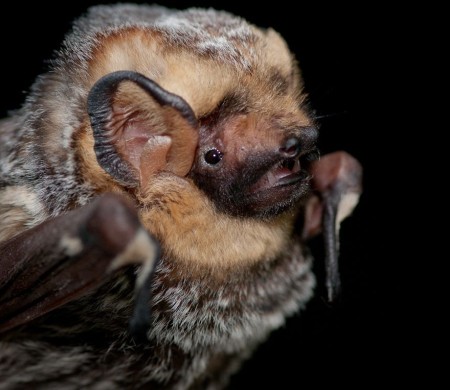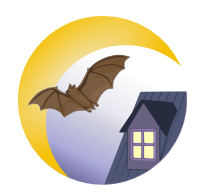Hoary bat

Credit: Daniel Neal from Sacramento, CA, US
Latin name: Lasiurus cinereus
Average size: Total length of 13-15 cm
Wingspan: 34-42 cm
Weight: 20-35 g
External characteristics: This is the largest species of bat in Canada. They have a light-brown coat with individual hairs that are ash-coloured at their tips. The hair around the face and chin is yellow, which can help distinguish them from other species. Hoary bats’ ears are short and rounded with a well-defined black line bordering them. The tragus is short, round and wide. The back of the uropatagium and feet are covered with dense hair.
Habitat: In Canada, hoary bats live in coniferous or deciduous forests. They roost near the tops of trees and forage in clearings near sources of water. Unlike most species, the females do not congregate in maternity colonies. The males and the females migrate together. They forage close to sources of water and open areas. In the fall, individuals migrate to the southern United States and the Caribbean. There, they roost in crevasses between rocks or in squirrel nests.
Reproduction: It is not clear whether mating takes place before, during or after the southern migration. On average, the female gives birth to two offspring, but she can have as many as four each year. Gestation lasts around 56 days and the young weigh around 5.5 grams. Females give birth in a horizontal position and use the uropatagium to catch the pups.
Seen in: Alberta, British-Columbia, Manitoba, New-Brunswick, Newfoundland and Labrador, Northwest Territories, Nova-Scotia, Ontario, Prince Edward Island, Quebec, Saskatchewan, Yukon

